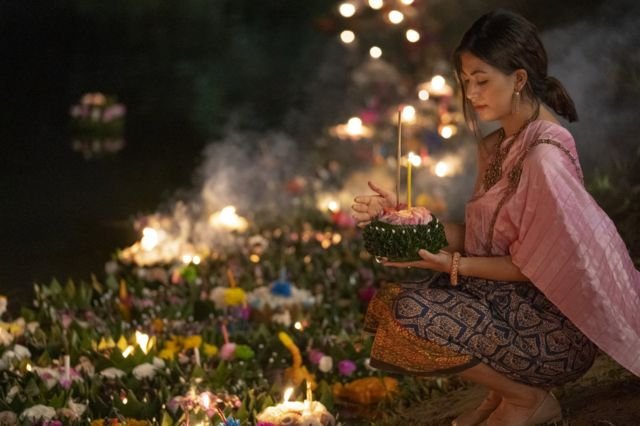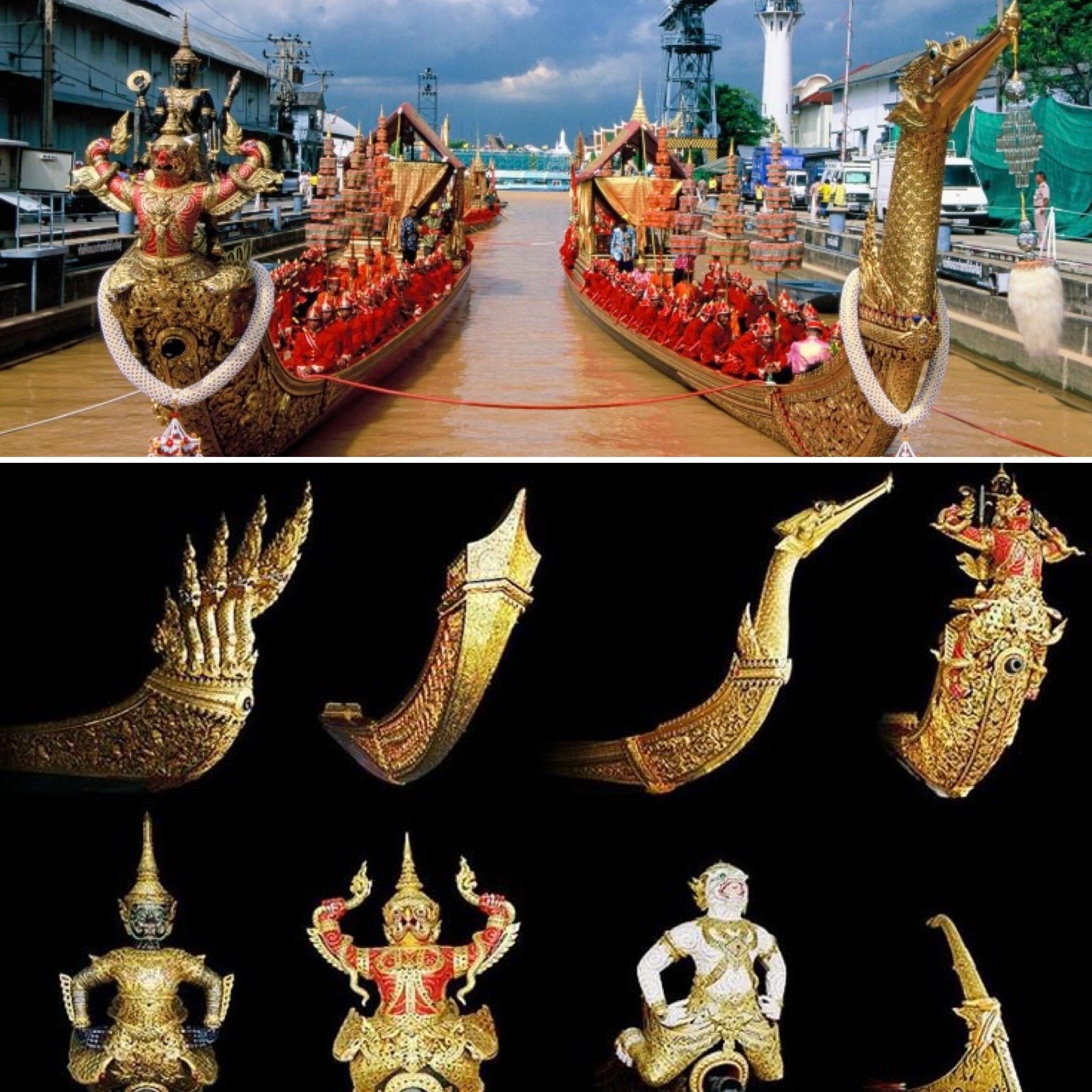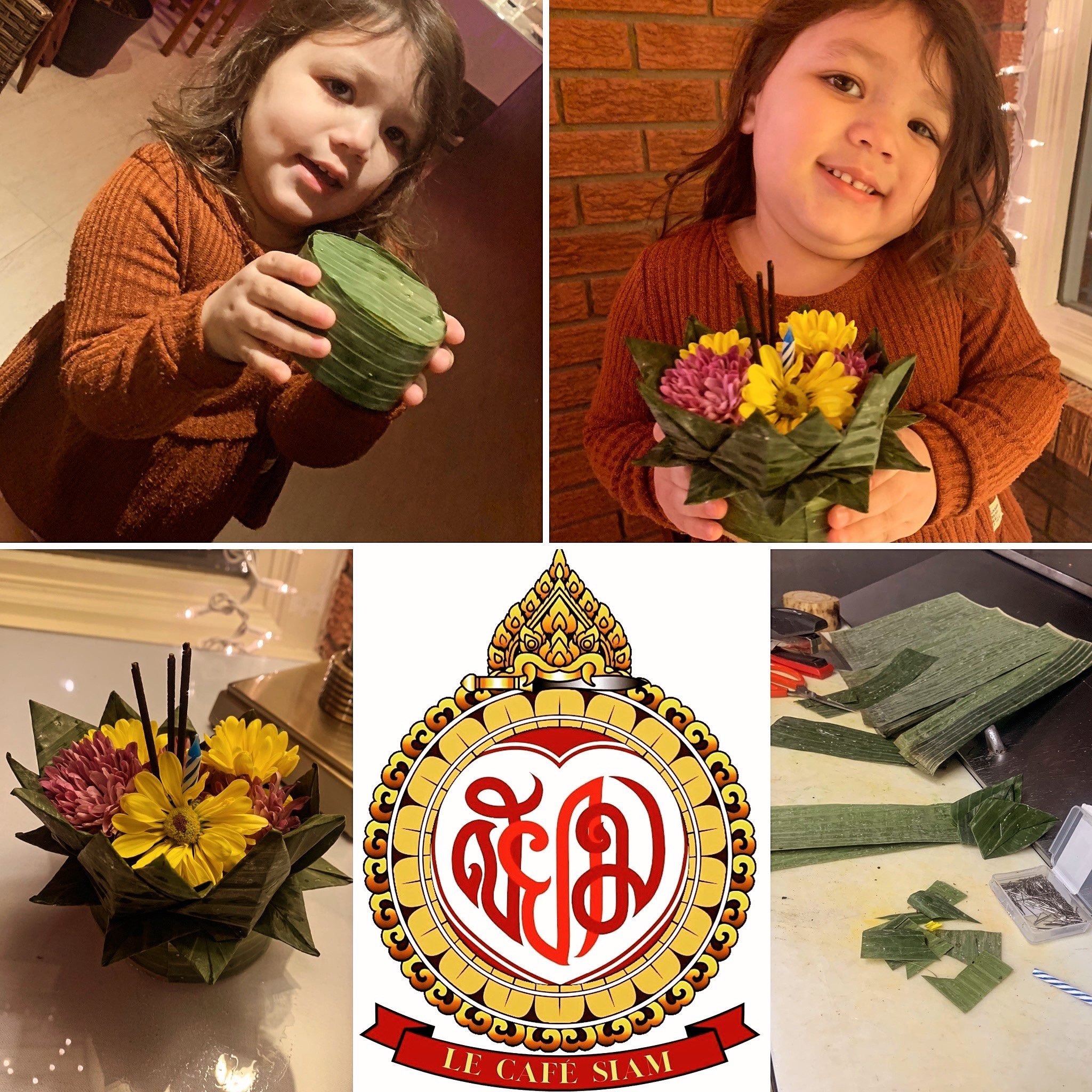Water Lantern Festival
Lanterns floating on the Chao Phraya River near the royal dock of the Grand Palace in Bangkok, Thailand
The "Water Lantern Festival" or "ลอยกระทง" or "Loi-Kra-Tong" represents a traditional Thai celebration observed annually on the full moon night of the twelfth lunar month, typically in November. Throughout this festival, individuals craft ornamental floating baskets or lanterns, referred to as "kratong," using banana leaves, flowers, candles, and incense sticks. These lanterns are delicately set afloat on water bodies, honoring Ganga, the goddess of water, and serving as offerings to the Buddha. This ritual symbolizes the dispelling of negativity, purifying the surroundings, and inviting positive energy into the lives of participants and their communities.
Nowadays, the Lamp Lighting Festival known as "Yi-Peng" or "ยี่เป็ง" in the northern region is regarded as an integral part of the Central Plain’s Water Lantern Festival.
The exact origins of the floating lantern tradition lack definitive evidence. However, customs centered around honoring "ancestral spirits" or indigenous deities have been ingrained within the Southeast Asian populace for a minimum of 3,000 years, pre-dating the influx of Buddhism and Hinduism/Brahmanism from India.
Hanging Lanterns are typically crafted from paper and intended for suspension on trees, poles, or string.
As previously mentioned, in contemporary times, the lanterns are offered in reverence to Ganga, the goddess of water. However, historically, these lanterns were devoted to earth and water spirits, devoid of Hinduism/Brahmanism influence. Recognizing the significance of water and soil in sustaining life, individuals across Southeast Asia engage in rituals. Although it is no longer part of my personal tradition due to my Christian faith, these rituals involve seeking forgiveness for inadvertent transgressions such as inappropriate stepping on the ground, improper waste disposal, or any unsuitable actions. Concurrently, they express gratitude by utilizing floating materials to express homage and by placing offerings onto the water, allowing them to drift away.
Traditionally, water lanterns are crafted using banana trunk and leaves, although there are variations like bread, water, plastic foam, and even ice.
After adopting Buddhism-Brahmanism from India around 2,000 years ago, the ancient Siamese royal court modified the ritualistic offerings dedicated to water and soil spirits in accordance with the newly embraced religious principles. This adaptation led to a shift in the original meaning, evolving it into the tradition of using floating lanterns as a form of reverence toward the Buddha and celestial beings, namely Ganga, the goddess of water. Subsequently, as a means to symbolically drift away negativity or ill fortune.
In Thailand, the tradition of floating lanterns has been passed down from the past to the present day. Despite a lack of clear evidence, historical inscriptions from the Sukhothai period and contemporaneous documents do not explicitly mention the term "floating lanterns." Even in the inscriptions of King Ramkhamhaeng, there is only the term "Luminous Festival," which broadly signifies acts of making merit and paying homage to ancestral spirits and indigenous deities.
Early documents and literature from the Ayutthaya period mainly refer to activities such as "lighting lamps," "floating lamps," and "hanging lamps," within the royal ritual ceremonies.
Sky Lanterns are crafted from delicate paper supported by lightweight bamboo frames that secure a candle underneath. These lanterns are believed to be offerings destined for the Buddha's Stupa in the heavens.
During the reign of King Rama III in the Rattanakosin period (the current era), a time that followed the turbulent loss of the Ayutthaya capital and the establishment of Bangkok as the new capital, characterized by a concerted effort to stabilize and reunify the country after a period of upheaval and transition, the realm experienced a notable decrease in conflicts and a resurgence of stability. King Rama III, in his efforts to ensure the prosperity of the kingdom, supported the revival of significant ceremonial traditions. He authored the book “Queen Chulaluck’s Manual” envisioning the scenes of the story occurring during the era of the fall of the Kingdom of Sukhothai. (See: Siamese-Thai Royal Lineage for the origin of the Queen’s name.)
In this esteemed manuscript, it is documented that Queen Chulaluck (title), named "Nopamas," conceived the notion of crafting lotus-shaped lanterns from banana leaves. These lotus-shaped lanterns symbolize mythical lotus flowers known as "Kamut" or "กมุธ," which bloom just once a year at midnight. These legendary lotus blooms were deemed fitting to be fashioned into lanterns and set afloat as offerings in reverence to the Lord Buddha's footprints.
Upon witnessing the creation, her husband, the king, inquired about its significance. She explained its profound meaning, greatly impressing the monarch. Consequently, His Majesty bestowed his royal endorsement, decreeing, "Henceforth, every Siamese king shall create floating lanterns resembling lotus flowers on the full moon night of the twelfth month to pay homage to the Buddha’s footprint." Due to this reason, the use of banana leaves to make floating lanterns instead of other materials became popular and is still practiced until today.
Royal Barges Procession for Tri-Cloth Giving Ceremony
While the Queen Chulaluck’s Manual recounts a tale from the Sukhothai period, it is commonly thought to be a literary work attributed to His Majesty King Rama II, given the resemblances in idioms to the literature of the present-day Rattanakosin period.
The upper rows in the lower pictures showcase four primary royal barges exclusively reserved for the King and his immediate family. The remaining vessels are accessible to other royal descendants and nobility for operation.
During the Bangkok era, the Water Lantern Ceremony was initially a ceremonial/ritual practice reserved for the royal court before gradually disseminating among the common people. Subsequently, its popularity extended throughout the country around 1957. Ultimately, this festival evolved into a significant and cherished tradition among the Thai people nationwide.
Regarding the royal customs, the Water Lantern Ceremony stands among numerous rituals of the court. November signifies the height of Thailand's flooding season, particularly in the central plains. It also marks the conclusion of the rainy season, enabling monks to resume travel after their confinement in the temple throughout the rainy period. Moreover, it is during this time that monks receive three-piece orange cloths. Therefore, during this time, there is a proliferation of lantern ceremonies (due to the shorter winter days) and diverse water-related rituals, such as the Hindu-influenced "Diwali ceremony," the Lighting of Hanging Lanterns, the Royal Barges Procession for Tri-Cloth Giving Ceremony, and the Water Lantern Ceremony.
These festivals hold such a special place in my heart…
The Royal Barges Procession was truly magnificent, a grand display that showcased our enduring power and our legacy of reign over this region for thousands of years. Each barge depicted characters from the Ramayana, a mythical tale from Hinduism that our dynasty embraced to symbolize our divine rights.
Approximately 52 elaborately adorned barges (some are gold gilded, depends on the rank of the owner), manned by hundreds of rowers, would grace the Chao Phraya river, a city of ten millions people in absolute silence, except for the rhythmic chants passed down through generations that synchronized the rowing. Every rower would lift their paddles simultaneously, in perfect harmony with the song's cadence. And when the paddles striking the water in unison echoed with unwavering discipline and dedication, serving as a solemn reminder that the preservation of our traditions rests solely upon us and carries the weight of sacred responsibility. The king, during this procession, would halt at significant temples along the river, personally offering tri-cloth to the residing monks. This occasion also marked the indulgence in traditional dishes like Massaman Curry and Kabuli Rice as per tradition since the First Reign.
In the past, the main royal barges would be stationed at the royal dock adjacent to the Grand Palace, where the king personally set a lantern adrift in the evening. Our school permitted us to craft lanterns in the afternoon, and on weekdays that aligned with the ceremony, we would collectively float these lanterns. There are also a lot of firework display as well.
As for today, Abigail and I will be in the kitchen working on our lantern…








